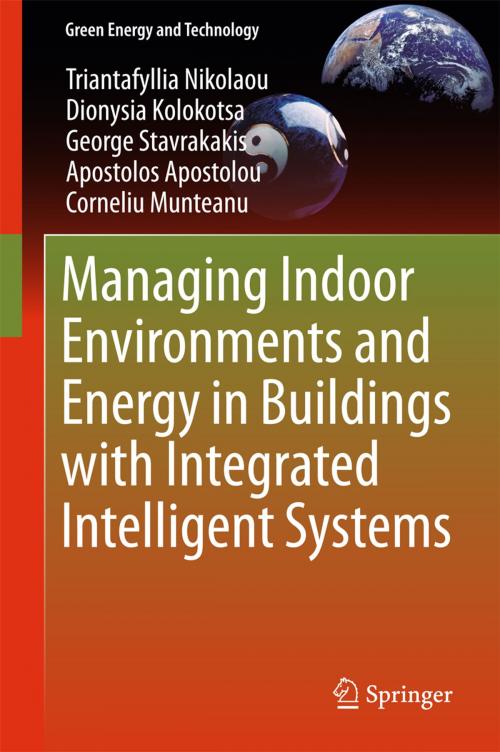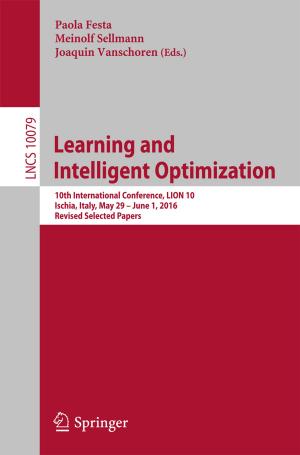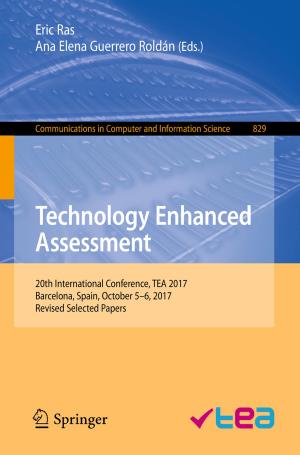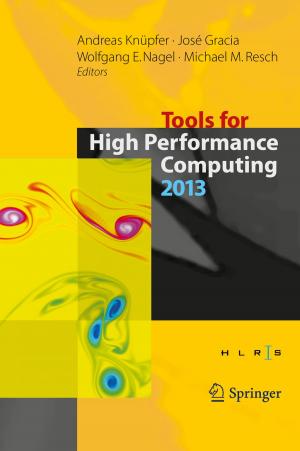Managing Indoor Environments and Energy in Buildings with Integrated Intelligent Systems
Nonfiction, Science & Nature, Technology, Engineering, Civil, Power Resources| Author: | Triantafyllia Nikolaou, Dionysia Kolokotsa, George Stavrakakis, Apostolos Apostolou, Corneliu Munteanu | ISBN: | 9783319217987 |
| Publisher: | Springer International Publishing | Publication: | August 22, 2015 |
| Imprint: | Springer | Language: | English |
| Author: | Triantafyllia Nikolaou, Dionysia Kolokotsa, George Stavrakakis, Apostolos Apostolou, Corneliu Munteanu |
| ISBN: | 9783319217987 |
| Publisher: | Springer International Publishing |
| Publication: | August 22, 2015 |
| Imprint: | Springer |
| Language: | English |
Featuring a detailed analysis and presentation of innovative researches, methods, algorithms and technologies that deal with integrated intelligent systems for the efficient management of energy and indoor environment in buildings, this book encompasses the regulations, directives and standards regarding the energy and the indoor environment of buildings as well as a literature review and discussion on the current state-of-the-art for buildings’ energy efficiency classification. Maximizing reader insight into this topic with the aid of simulation models for buildings and energy audits at office buildings are presented including tables and figures with the detailed information regarding the parameters, inputs, outputs and the outcomes of the surveys. This book also outlines the development of a Virtual Building Dataset (VBD) of office buildings as an innovative benchmarking and classification tool. The proposed methodology overcomes the difficulties and time required for collecting the necessary massive building constructional and energy bills data by creating them virtually using efficient stochastic simulation and by taking into account all parameters that may affect the energy performance and indoor thermal comfort of office buildings. The knowledge and ideas conveyed by the book are supported with equations and algorithms and 137 colored figures and 55 tables, and features a rich bibliography, references and web sources. The book contains the basic knowledge undergraduate and especially postgraduate courses on the emergent subject of energy management and saving in buildings. The innovative aspects and guides of the book give serious opportunities to the postgraduate students in this scientific area to further develop their research skills and capabilities.
Featuring a detailed analysis and presentation of innovative researches, methods, algorithms and technologies that deal with integrated intelligent systems for the efficient management of energy and indoor environment in buildings, this book encompasses the regulations, directives and standards regarding the energy and the indoor environment of buildings as well as a literature review and discussion on the current state-of-the-art for buildings’ energy efficiency classification. Maximizing reader insight into this topic with the aid of simulation models for buildings and energy audits at office buildings are presented including tables and figures with the detailed information regarding the parameters, inputs, outputs and the outcomes of the surveys. This book also outlines the development of a Virtual Building Dataset (VBD) of office buildings as an innovative benchmarking and classification tool. The proposed methodology overcomes the difficulties and time required for collecting the necessary massive building constructional and energy bills data by creating them virtually using efficient stochastic simulation and by taking into account all parameters that may affect the energy performance and indoor thermal comfort of office buildings. The knowledge and ideas conveyed by the book are supported with equations and algorithms and 137 colored figures and 55 tables, and features a rich bibliography, references and web sources. The book contains the basic knowledge undergraduate and especially postgraduate courses on the emergent subject of energy management and saving in buildings. The innovative aspects and guides of the book give serious opportunities to the postgraduate students in this scientific area to further develop their research skills and capabilities.















